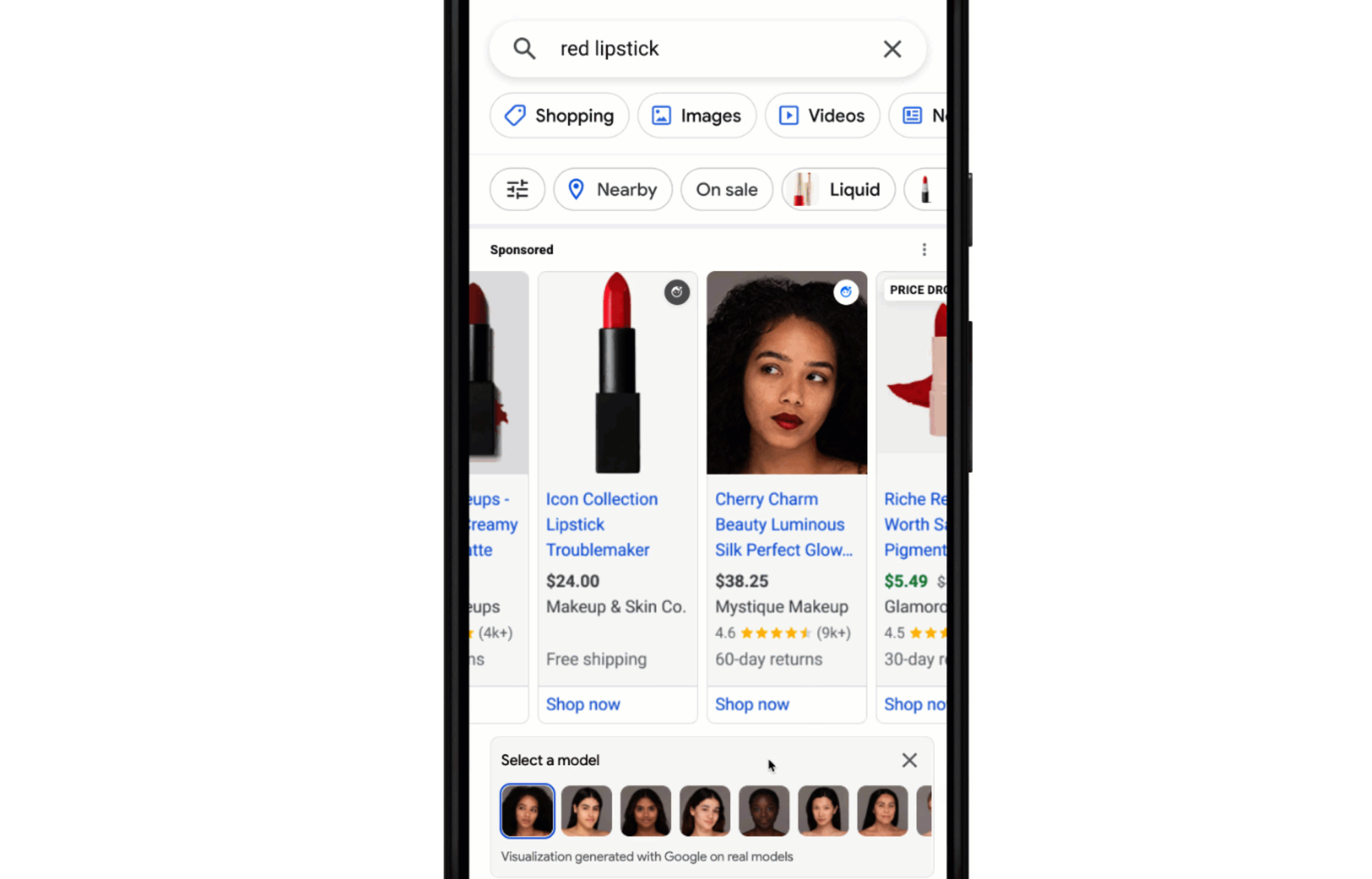Google launches AR Beauty Ads
Google this month announced the launch of new AR beauty tools for shoppers and brands on mobile browsers. The new tools allow shoppers to try virtually hair color and foundation. It also enables brands to promote their products with AR Beauty ads.

Google this month announced the launch of new AR beauty tools for shoppers and brands on mobile browsers. The new tools allow shoppers to try virtually hair color and foundation. It also enables brands to promote their products with AR Beauty ads.
With AR Beauty ads, brands can create shopping ads that feature an inclusive try-on experience in place of the ad's product image.
The new AR beauty tools are available now in the US, and will be rolling out to other countries soon. To try out the new AR beauty tools, users can visit Google Search and search for a beauty product like "pink lipstick" or "foundation."
How to Participate
To add virtual try-on experiences to your products, brands need to partner with a data provider.
The partners (currently Perfect Corp. and PulpoAR) will upload the AR assets for the brands. No additional setup or configuration is required.
- For free listings: Brands need to partner with a data provider who can upload AR assets to Google on their behalf. Alternatively, brands can upload their own AR assets via the Manufacturer Center account.
- For Shopping ads: Brands must have a Merchant Center account containing the products they would like to advertise with the try-on feature, a Manufacturer Center account with your brands registered, a linked Merchant Center and Manufacturer Center account, and a Google Ads account with an active Performance Max campaign or Shopping campaign, which should also be linked with the Merchant Center account.
How does it work
- How does segmentation work? AR Beauty virtual try-on experiences use segmentation to track the user's face and body movements. This allows the product to be rendered accurately on the user's face and body.
- How does rendering work? AR Beauty virtual try-on experiences use a variety of rendering techniques to create a realistic experience for the user. These techniques include lighting, shading, and texture mapping.
- What's AR Beauty virtual try-on privacy policy? AR Beauty virtual try-on experiences do not store any personal information about the user.
- What factors can influence the virtual try-on experience? The virtual try-on experience can be influenced by a variety of factors, including the user's device, lighting conditions, and facial features.
In a blog post, Lilian Rincon, Senior Director of Product, Shopping at Google, explained that beauty products are some of the trickiest items to shop for online, because it can be difficult to find the right shade. AR beauty tools can help shoppers solve this problem by allowing them to virtually try on products before they buy them.
Google has been offering AR beauty features for nearly three years, and shoppers have been gravitating towards them. According to Google internal data, shoppers interact with beauty products 10% more when AR is present.
The new AR beauty tools on mobile browsers
- Hair color try-on: Shoppers can now see what different hair colors would look like on them or on a model who resonates with them. L'Oreal is the first brand to offer hair color try-on, and other brands like Splat and Revlon will be available soon.
- Foundation try-on: Shoppers can now virtually try on foundation to find the right shade for their skin tone. They can also choose to see what a foundation shade looks like on a diverse set of 148 models.

